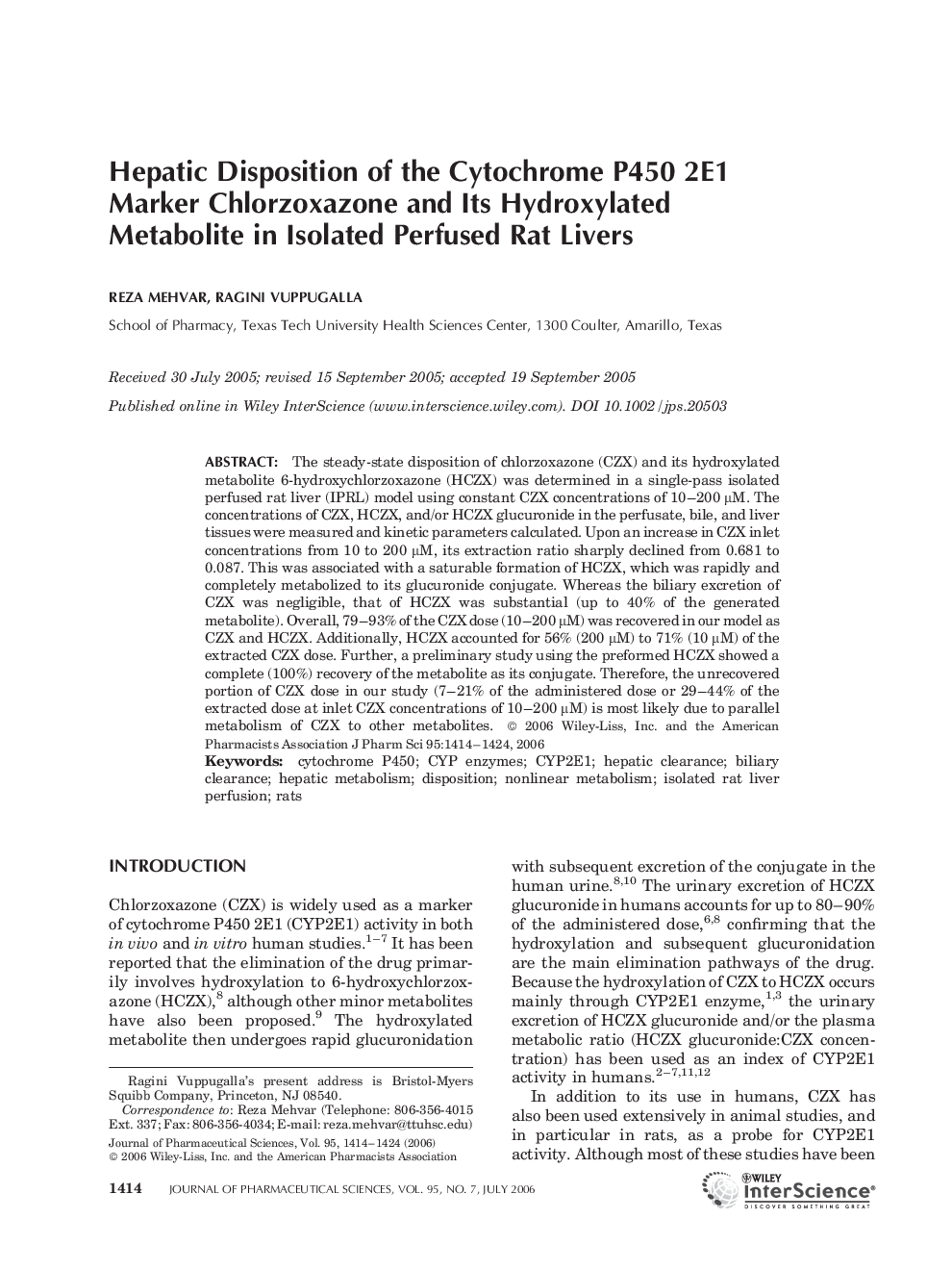| Article ID | Journal | Published Year | Pages | File Type |
|---|---|---|---|---|
| 2487928 | Journal of Pharmaceutical Sciences | 2006 | 11 Pages |
Abstract
The steady-state disposition of chlorzoxazone (CZX) and its hydroxylated metabolite 6-hydroxychlorzoxazone (HCZX) was determined in a single-pass isolated perfused rat liver (IPRL) model using constant CZX concentrations of 10-200 µM. The concentrations of CZX, HCZX, and/or HCZX glucuronide in the perfusate, bile, and liver tissues were measured and kinetic parameters calculated. Upon an increase in CZX inlet concentrations from 10 to 200 µM, its extraction ratio sharply declined from 0.681 to 0.087. This was associated with a saturable formation of HCZX, which was rapidly and completely metabolized to its glucuronide conjugate. Whereas the biliary excretion of CZX was negligible, that of HCZX was substantial (up to 40% of the generated metabolite). Overall, 79-93% of the CZX dose (10-200 µM) was recovered in our model as CZX and HCZX. Additionally, HCZX accounted for 56% (200 µM) to 71% (10 µM) of the extracted CZX dose. Further, a preliminary study using the preformed HCZX showed a complete (100%) recovery of the metabolite as its conjugate. Therefore, the unrecovered portion of CZX dose in our study (7-21% of the administered dose or 29-44% of the extracted dose at inlet CZX concentrations of 10-200 µM) is most likely due to parallel metabolism of CZX to other metabolites. © 2006 Wiley-Liss, Inc. and the American Pharmacists Association.
Keywords
Related Topics
Health Sciences
Pharmacology, Toxicology and Pharmaceutical Science
Drug Discovery
Authors
Reza Mehvar, Ragini Vuppugalla,
